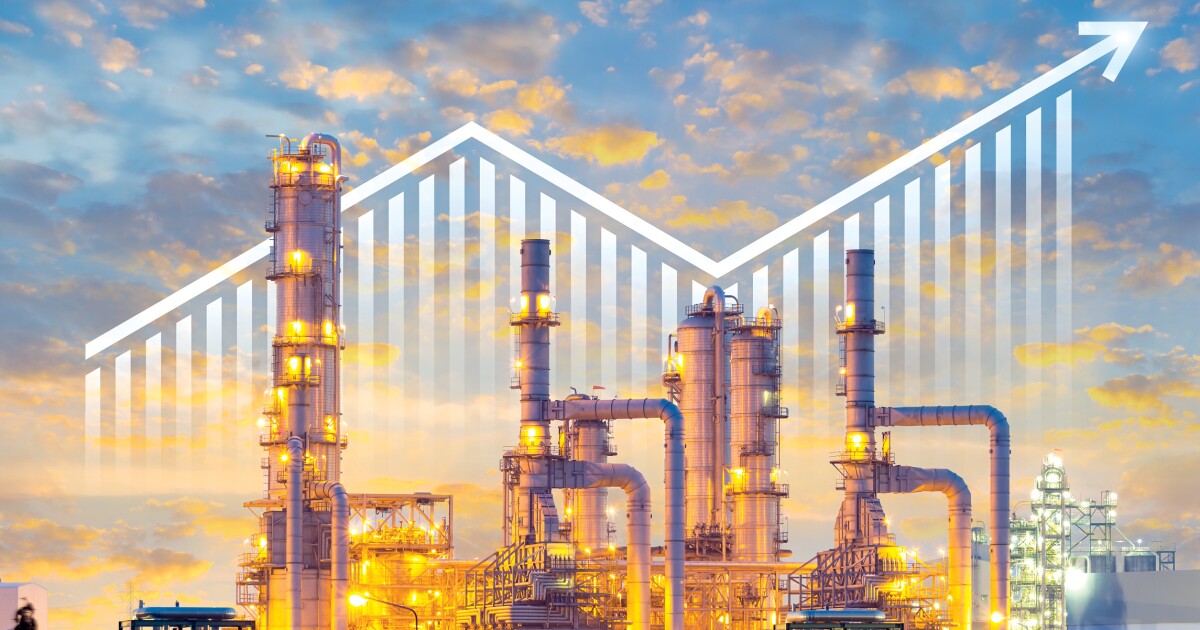

High gas prices are hitting drivers again, making everyday tasks more expensive for many people and letting air from the White House’s sails amid its “Bidenomics” happy talk.
The average for U.S. gas prices hit a headache-inducing high in June 2022, briefly ticking over $5 a gallon after Russia’s invasion of Ukraine crimped global oil supplies and sent fuel costs skyrocketing. But a year later, gas prices had fallen by about 30% due to a slump in the price of crude oil — which accounts for roughly half the price of a gallon of gas.
HOUSING STARTS FALL TO LOWEST LEVEL SINCE 2020 AS MORTGAGE RATES REMAIN HIGH
Now, at the start of the fall, gas prices are rising again. The national average for regular formulation gasoline approaches $3.90. That’s the highest seasonal level in more than a decade. And it reflects a marked change from the usual, annual cycle of gas prices, which typically decline as the summer fades away. But gas prices have actually ticked up over the past month, adding more challenges to the country’s teetering economic situation.
There are two main factors behind the higher oil and gas prices. The economy recovered solidly after the COVID-19 pandemic, and high demand in places like the U.S., India, and China has pushed prices up, according to Bob McNally, president of Rapidan Energy Group. Additionally, coupled with that hot global demand, Saudi Arabia and Russia recently extended production cuts, making oil more expensive.
Consumers will undoubtedly feel the pain at the pump when filling up. Yet they also will start to notice the higher energy prices translating to higher prices for other goods and services, Greg McBride, chief financial analyst at Bankrate, told the Washington Examiner. Increased fuel prices add to inflation by infecting the prices of products unrelated to oil production.
Take, for example, a company that manufactures and sells tables and other furnished goods. The higher gas prices make it more expensive for those goods to be delivered to customers. So, the company will need to raise prices on the furniture to make up for the loss. That company might also own a factory that uses diesel to run some of the machines, and that increased cost might also translate to higher furniture prices.
This is a double whammy of bad news for President Joe Biden, according to McNally. At a basic political level, high gas prices don’t bode well for presidential approval, especially for an incumbent heading into an election year, McNally noted, particularly with fears of a recession.
“In addition to just the consumers feeling the pain, and public confidence and approval goes down for the president, etc., when these prices go up — in addition to that you have an oil price spike, which if you read the broader economic discussion is sort of like this unwelcome surprise that could derail the soft landing,” McNally told the Washington Examiner.
What McNally described as a “soft landing” is a scenario where the Federal Reserve is able to bring down inflation without knocking the economy into a recession. The Fed has raised interest rates 11 times over the past 1 1/2 years in an effort to achieve that goal.
Still, that approach isn’t cost-free. When the Fed raises its interest rate target, borrowing costs rise, and investments become more expensive. And if the Fed raises rates too much and too quickly, it could result in too little demand. Businesses might have to lay off workers, and those without jobs have less money to spend so other companies suffer and fire workers or go out of business — and so on.
A recession can occur as a result, which would likely feature millions without work and a high unemployment rate — a nightmare scenario for the Biden administration and U.S. families.
Just a few months ago a soft landing was looking like a distinct possibility, as inflation declined to 3% in June and the labor market was still chugging right along with unemployment around 3.5%. But the higher energy prices caused inflation to pop the past two months, and it is now back up to 3.7%, with the unemployment rate at 3.8%.
Many were hoping that the most recent interest rate hike would be the Fed’s last, although now there is a possibility that the central bank will have to raise rates further or hold them at their high level of 5.25% to 5.50% for longer in order to push down demand and tame inflation.
CLICK HERE TO READ MORE FROM THE WASHINGTON EXAMINER
The White House had been touting the falling inflation and strong labor market as Bidenomics at work — an effort to give a president marred by low approval ratings some economic bona fides heading into the election. But if the Fed has to keep tightening because of spiking oil and gas prices, that effort could backfire.
And this might not be the highest that oil and gas prices will go. McNally predicts that while at some point the Saudis will likely increase production and prevent them from getting out of hand, it is reasonable to foresee gasoline surpassing $4 per gallon and crude oil rising to $100 from the $91 it is at now.






